Is your sewing machine struggling when sewing through multiple layers? Maybe it's time for a heavy-duty sewing machine. Here are my top picks for the best heavy-duty sewing machines - ones I was deciding among when picking my own hd machine.
If you are new to HD sewing machines, fear not - I'll guide you through everything: from what it is, when you need it, and which models might be suited best for your budget.
You'll also find out the difference between a domestic and an industrial HD sewing machine, as well as my best tips on what to look for when getting an HD sewing machine. Also, unboxing video and a detailed review of my own household heavy-duty sewing machine.
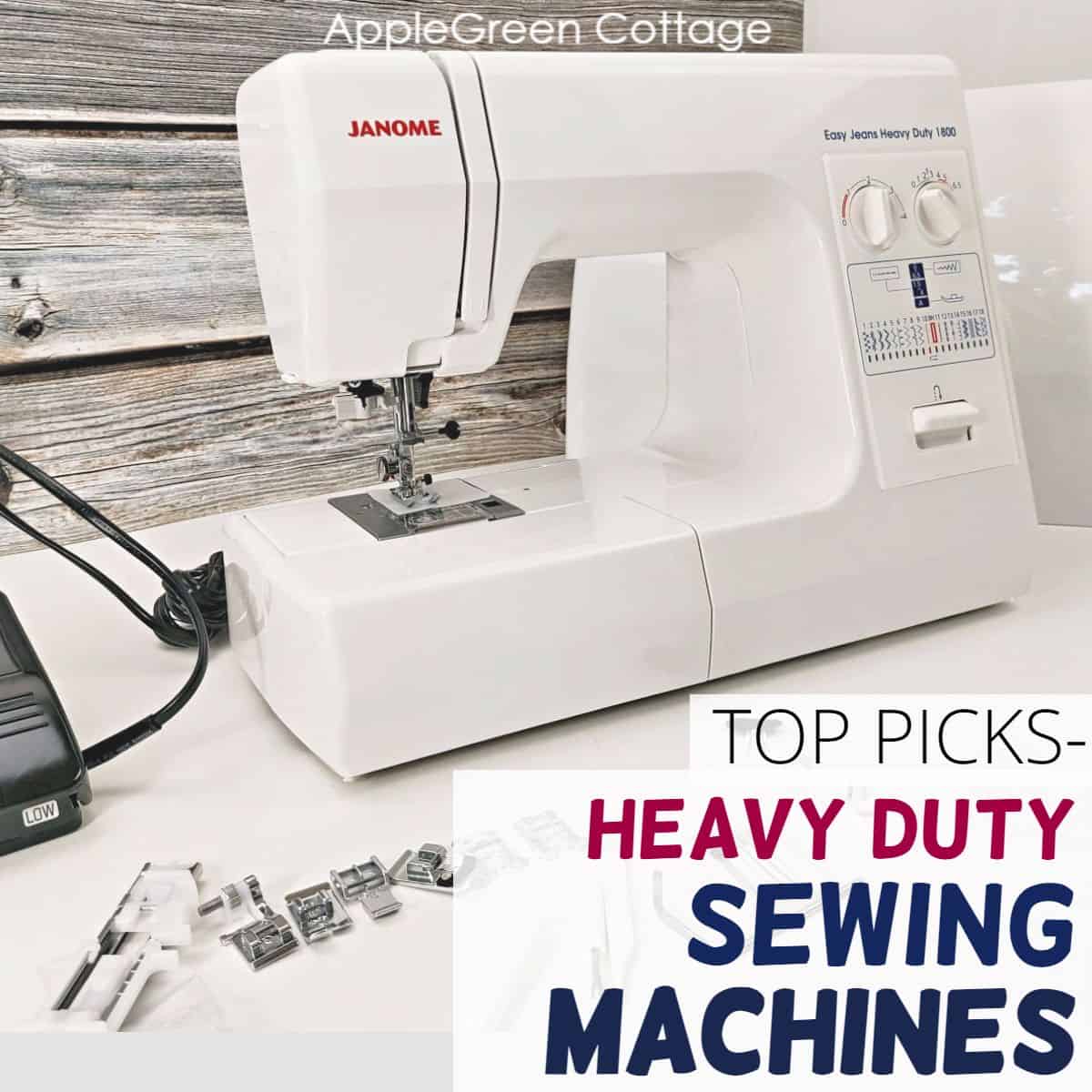
This post contains affiliate links, at no cost to you. Thank you for your support. If you're looking for more information on sewing machines, or are starting to use a sewing machine, check out the learn to sew page.
Best Heavy-Duty sewing machines summary:
Table Of Contents
- Best Heavy-Duty sewing machines summary:
- What is a Heavy Duty home sewing machine?
- When Do You need an HD Sewing Machine?
- Janome HD 3000 and Janome HD 1800
- JANOME HD3000 HEAVY-DUTY SEWING MACHINE
- Differences Between HD3000 and HD 1800
- Janome HD3000 vs Janome HD1000 comparison
- Singer 4423 Heavy Duty Sewing Machine
- Singer 4423 vs Janome HD 3000
- Elna 3210 Easy Jeans (Also called Elna Easy Jeans)
- Elna 3210 Easy Jeans vs Janome HD1800
- Note on Professional-Grade, Industrial HD sewing machines
- Conclusion
- WANT MORE FREE TUTORIALS AND GOODIES?
- Best overall: Janome HD3000
- Most popular for beginners: Singer 4423 Heavy Duty
- Best for denim/jeans: Elna 3210 Easy Jeans
What is a Heavy Duty home sewing machine?
First, let me clarify this question I frequently bump into: this is a type of sewing machine designed to handle tough fabrics and thicker materials such as denim, canvas, and leather - better.
These machines may still be in the home-sewing range, but built with more powerful motors, durable parts, and can handle some extra workload - and can sew through more layers. They are ideal for sewing projects that require more strength and durability, such as bagmaking, and heavier home decor.
However, they are still weaker than industrial sewing machines. Industrial sewing machines are an entirely different story, for a different post about sewing machines. Specialized, heavy-weight. Now, to the second-most frequent question:
When Do You need an HD Sewing Machine?
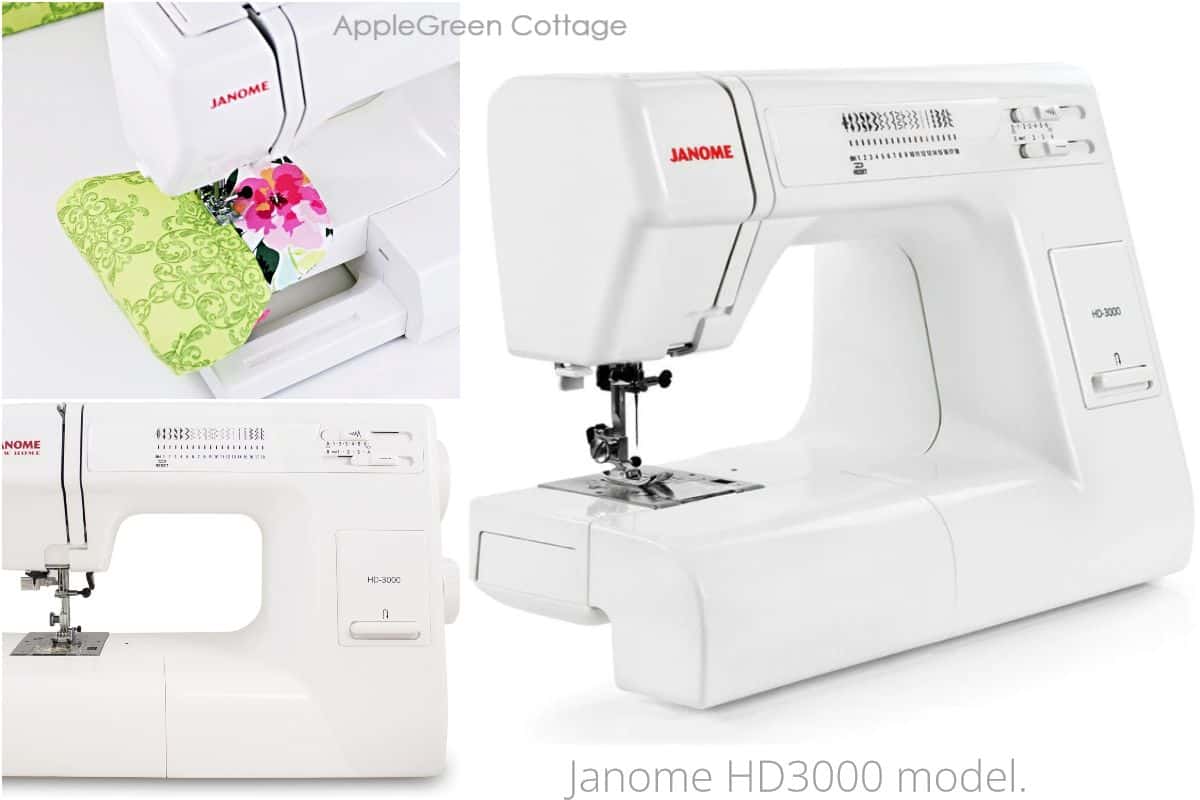
If you are looking for a machine that will handle sewing up a wallet pattern like this one (or any of these patterns actually) - you can do everything on a regular home sewing machine. All AppleGreen Cottage patterns are designed work on domestic machines, yes.
However, if you are looking for a machine that deals with all of these even easier, and more comfortably, and also want to sew up a few patterns you have always wanted to try but are not exactly suited for a basic machine, then a budget, domestic heavy-duty machine is the way to go: an easy to use, simple non-computerized HD sewing machine.
An aspiring bagmaker? It's a no-brainer: definitely go for an HD sewing machine!
Difference between A Domestic Heavy Duty sewing machine and an Industrial Heavy Duty Sewing Machine
The main question to answer here is 'When do you need an industrial sewing machine'.
The only time you REALLY need an industrial sewing machine for me would be if I wanted to sew a lot of stiff layers - those industrial machines are workhorses! Industrial heavy-duty sewing machines differ from heavy-duty home sewing machines in several ways: in speed, power, and durability, and they have specialized components designed for heavy use.
So if you are planning to start a bag-making business with a lot of leather sewing involved right now, get yourself one from that range. All else, I would go with the less overwhelming, easy-to-move, domestic HD models listed below.
*Due to the higher pricing and an entirely different segment, I did not include any industrial models into this comparison, but in case your budget could extend to several thousand USD, go check it out. My favorite, Janome HD9 is a top-notch professional, industrial sewing machine. Hopefully soon, I'll create a comparison between that one and the corresponding Juki model that's been on my mind for years too.
Why I bought a household heavy-duty home sewing machine?
I wanted a simple, mechanical, but stronger-than-regular sewing machine. An affordable, yet sturdy model for my sewing projects. I don't need a giant sew-through-everything industrial in my sewing corner (and most probably you neither).
After a lot of research and time spent, I narrowed it down to 3, 'for-my-needs' best heavy-duty sewing machine models:
My 3 Top Picks as Best heavy duty sewing machines
- Janome HD3000 which had fantastic reviews for the use I was looking for, but is not available where I live
- so I went with Janome HD1800 (which is a European equivalent to Janome HD3000 with nearly all features identical, just another name - see detailed comparison and review below.)
- Singer 4423
- Elna 3210 Easy Jeans
Let me show you how they differ, it might help you decide if you too are looking for one of these to buy. First, all the details I found important about my newest heavy-duty machine:
Janome HD 3000 and Janome HD 1800
My Janome HD1800 Sewing Machine Review
While the key features of the main Janome HD models HD1000, HD3000, and HD5000 differ, HD3000 has been the most popular among those in the budget range. In Europe, that is HD1800. For good reasons.
Let me first show you a quick unboxing video so you can see what it includes (if you can't see the video, pause your ad blocker )
There's nothing fancy about it; no electronics, no auto thread cutters, but boy does it have everything I need.
I was impressed with the number of accessories it comes with.
- a hard case/cover
- a pack of needles (including a twin needle)
- three extra bobbins
- a set of screwdrivers (large and small)
- a spool holder,
- a lint brush,
- a seam ripper
- an additional spool pin,
- quilter bar
- dual-speed foot control
- An instructional guide is located in the top tray door of the machine, which indicates the feet and stitch settings for a variety of sewing tasks.
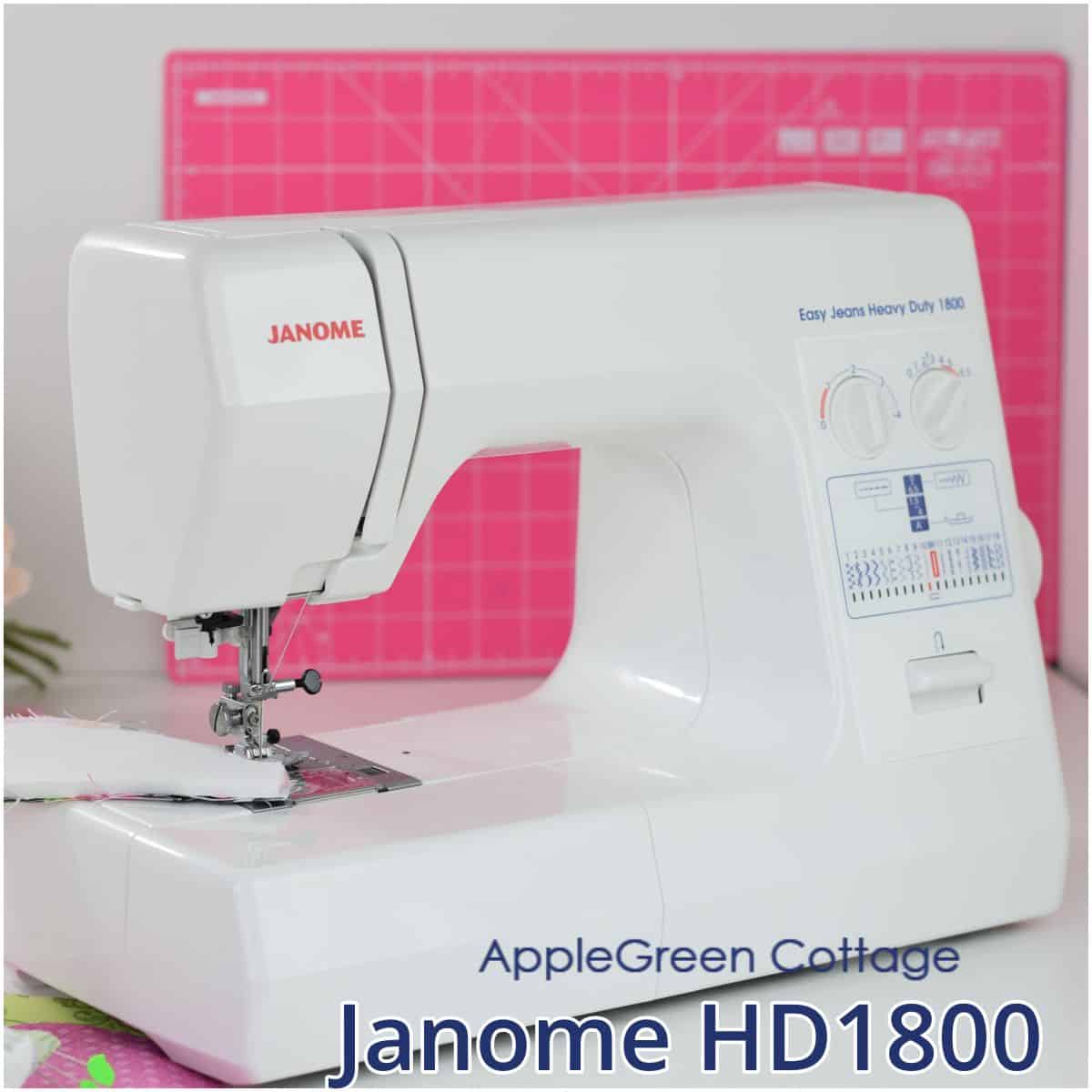
Sewing Machine Feet
My Janome heavy-duty sewing machine (1800 model) came with the following 9 sewing machine feet:
- zigzag foot 'A' - this one comes installed on the sewing machine
- transparent buttonhole foot 'B'
- overedge foot 'C' (the one with a brush)
- zipper foot 'E'
- satin stitch foot 'F' (an open-toe foot, I use it a lot)
- blind hem foot 'G' (you can use it to stitch in the ditch)
- straight stitch foot 'H'
- automatic buttonhole foot 'R'
Technical features:
- Weight – 8 kg (17.6 lb)
- Dimension – 15.6 x 7.2 x 11.3 inches (19 x 29 x 39 cm)
- frame construction – die-cast aluminum
- Stitch speed – 860 spm
- motor 0.5 amp (55Watt, 220 V)
- 7-piece feed dog
- top-loading bobbin
Sewing features:
- 19 built-in stitches
- reverse stitch lever
- built-in needle threader
- one-step buttonhole
- extra high presser foot lift
- foot pressure adjustment
- maximum stitch width: 6.5mm
- maximum stitch length: 4mm
- good for down to #80 thread (not thicker than that)
- snap-on/off machine foot mechanism ('System Matic')
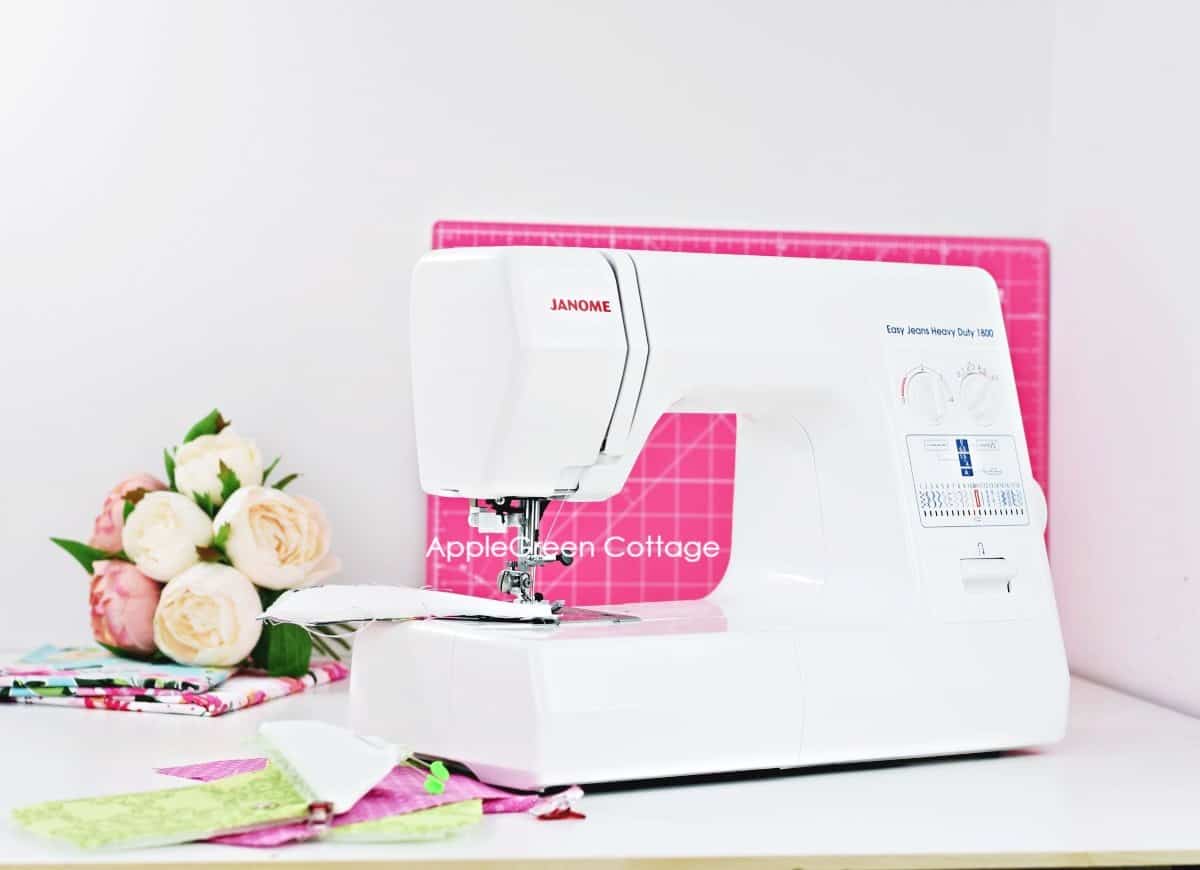
Pros:
- foot pressure adjustment - trust me, you'll want this one! You can adjust the foot pressure if you notice the seams puckering or uneven stitching when you change materials.
- 7-piece feed dog - helps prevent any fabric-feeding issues
- Top-load bobbin! Even though I love my front-loading bobbin on my previous sewing machine - oh how much EASIER it is to use the top-loading bobbin! Another bonus: it has a transparent cover, so I can see when I'm likely to run out of my bobbin thread, and replace it! (no more surprises, little bobbin!)
- maximum stitch width is 6.5 mm which is more than usual on a home sewing machine.
- there's a built-in needle threader. I've been changing the thread way too many times these weeks, just to see it in action. My eyes are rested!
- the presser foot lifts extra high. Not as high as with the industrial machines, of course, but still high enough for all the bags I want to sew.
PERKS:
- a see-through bobbin case cover, did I mention that!
- it has an organizer box on top of the machine for accessories, so you can have them all organized and ready to use. This is the place to store your presser feet, and needles. And the thread is nicely covered and secured from dust. I love this!
- in addition to the accessory, the machine also has the usual storage tray mounted next to the free arm.
There is a handy instructional guide located on the front of the machine. I love that the instructions are printed on the housing of the machine: the stitch options: on the front cover AND recommended stitch length plus the best-to-use sewing foot recommendation - right there on the front cover! It's a little bit like having the user manual printed on the machine, right before your eyes. Totally cool!
CONS:
That stitch selection red mark is small - I need to look pretty close to notice which one I have selected. It looks the same on Janome HD 3000 model too.
NOTE: You need to know that it has a 0.5 amp motor (55 Watt in Europe, with 220V) while I read that it had a 1.0 amp motor before. Janome must have changed that just a few years ago.
JANOME HD3000 HEAVY-DUTY SEWING MACHINE
Technical features:
- Weight – 23.2 lb
- Dimension – 16 x 7.2 x 11.3
- Body construction – die-cast aluminum
- Stitch speed – 860 spm
- motor 0.5 amp
- 5-piece feed dog
- top-loading bobbin
NOTE: You need to know that it has a 0.5 amp motor (55 Watt in Europe, with 220V) while I read that it had a 1.0 amp motor before. Janome must have changed that just a few years ago.
Sewing features:
- 18 built-in stitches
- reverse stitch lever
- built-in needle threader
- one-step buttonhole
- Extra high presser foot lift
- Foot pressure adjustment
- Maximum stitch width: 6.5mm
- Maximum stitch length: 4mm
Sewing machine feet included:
- zigzag foot 'A' - this one comes installed on the sewing machine
- transparent buttonhole foot 'B'
- overedge foot 'C' (the one with a brush)
- hemmer foot 'D'
- zipper foot 'E'
- blind hem foot 'G' (you can use it to stitch in the ditch)
- automatic buttonhole foot 'R'
A handy instructional guide is located in the top tray door of the machine, which indicates the feet and stitch settings for a variety of sewing tasks. Just like with HD1800 - great user experience! Also, a handy instructional guide is located on the front of the machine.
The usual storage tray is mounted on the machine's free arm, and it holds these accessories:
- a quilting ruler
- large and small screwdrivers
- a lint brush
- a seam ripper (buttonhole opener)
- one large and one small spool holder
- 4 extra bobbins
- an extra spool pin, with spool pin felt
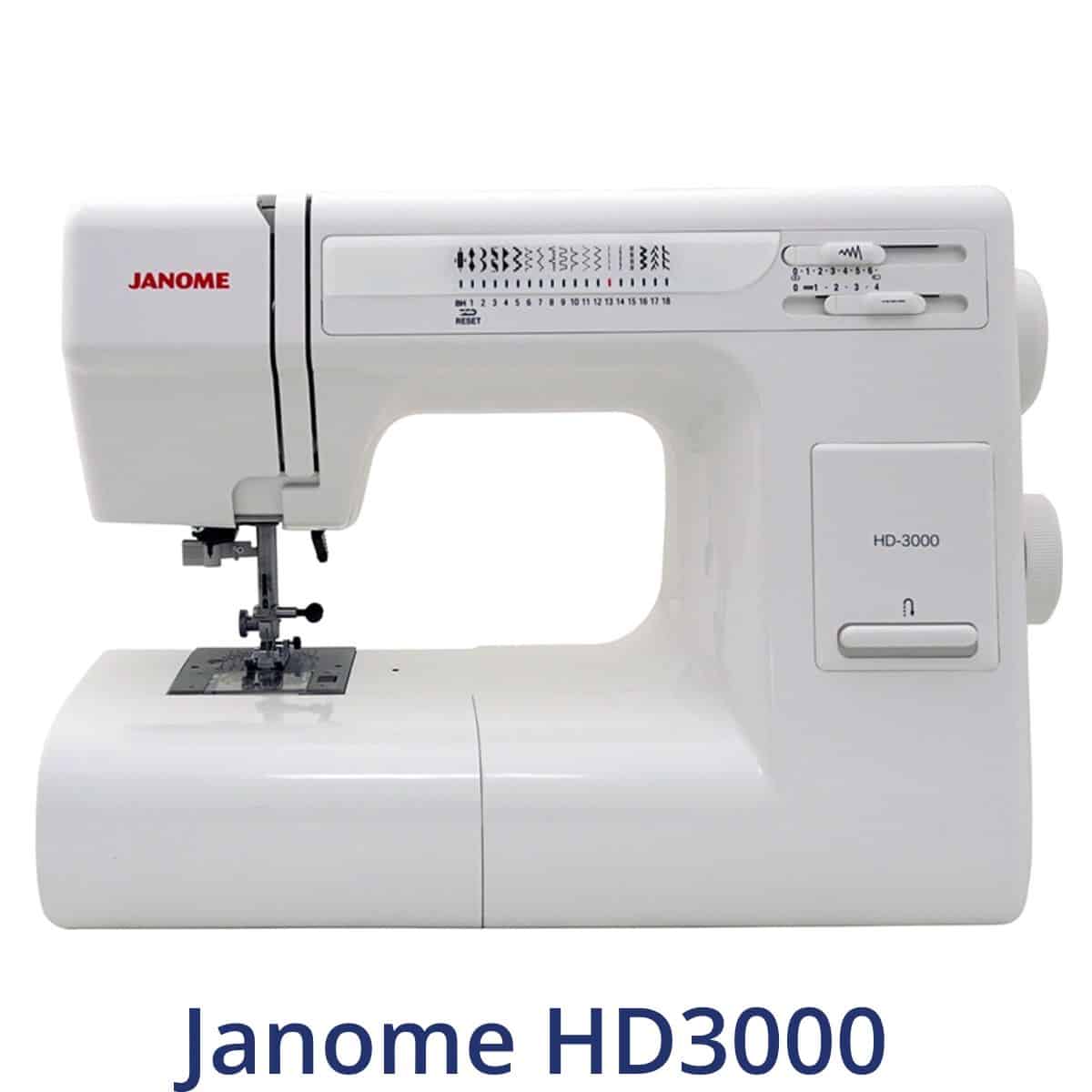
Differences Between HD3000 and HD 1800
I've had the privilege to investigate, in detail, all the aspects of the two models, in particular their differences. What I realized was the only differences are in a few accessories that are included, and the button design. Here's what I've come up with:
- All major technical features are the same: the 0.5 amp motor (HD3000 had a 1 amp motor years ago), strength, housing, aluminium die-cast frame - the same.
- a difference in foot pedal: HD1800 has a dual speed pedal (you can switch on the slower speed for thick materials)
- difference in the stitch length and width buttons design: dials on HD1800 and sliders on HD3000.
- design difference in the reverse stitch lever: the one on HD3000 is a bit wider.
- HD1800 has 2 sewing machine feet that are not included with HD3000: satin stitch foot 'F' and straight stitch foot 'H'.
- On the other hand, HD3000 has one sewing machine foot that is not included with HD1800, and that is the hemmer foot 'D'
- HD1800 has 19 stitches, HD3000 'just' 18 - but trust me, you'll only need the zigzag and straight stitch 99% of the time.
A Design Difference between HD3000 and HD1800
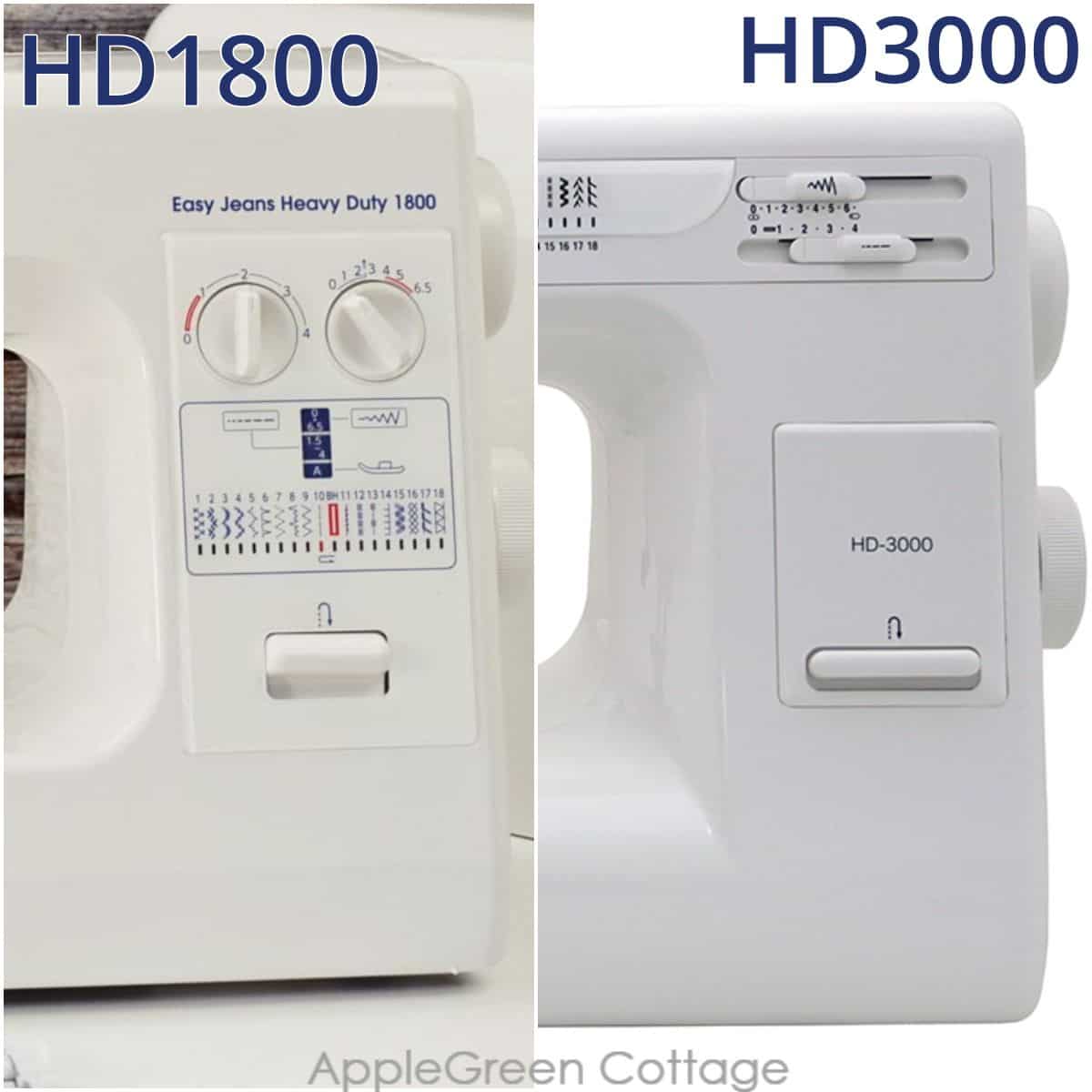
A slight design difference between HD 3000 and HD 1800: HD1800 has dials for the stitch selection. While I do prefer dials to the sliding buttons on HD3000, it's not a big thing.
Janome HD3000 vs Janome HD1000 comparison
Comparing to HD1000? The HD3000 and HD1800 both have a top loading bobbin, a better bobbin winder, and better feed dog assembly than HD1000, and both can stitch a wider zigzag than HD1000. If your budget allows, skip the HD1000 and head straight for 1800 or 3000.
Janome HD3000 has a one-step buttonhole option (cool!). Compared to the basic Janome HD1000 model (with only a 4-step buttonhole option), this is just one more reason to go with this popular choice, the HD1800/HD3000.
Weight of HD1000 is 15 lb, while HD3000 is 23,2 lb).
Soft cover with HD1000, hard cover with HD3000.
MAximum stitch width 5mm on HD1000, and 6.5mm on HD3000
Singer 4423 Heavy Duty Sewing Machine
Main features of the Singer 4423 heavy-duty sewing machine:
- The Singer 4423 Sewing Machine has a maximum sewing speed of 1,100 stitches-per-minute.
- It has a metal interior frame and a stainless steel bedframe
- 0.7 amp motor (which means a good, powerful motor for a budget hd machine)
Considering all these features, this sewing machine can sew through a variety of heavy-weight fabrics and provides long-lasting stability.
Accessories and use:
Sewing features:
- 23 built-in stitches including basic, stretch, decorative, and buttonhole stitches. I keep repeating that the number of stitches is not a decisive factor, still good to know.
- It has a built-in needle threader.
These machine feet are included:
- an all-purpose foot
- zipper foot
- buttonhole foot
- a button sewing foot.
The accessories included are similar to the ones that come with Janome HD 3000: a lint brush, quilting guide, needles, bobbins, a screwdriver, and an auxiliary spool pin with spool pin felt - you'll find them in the accessory tray. The machine comes with a soft-sided dust cover too.
Threading is easy, as it has guides, like the majority of sewing machines nowadays. It also features a one-step button hole option.
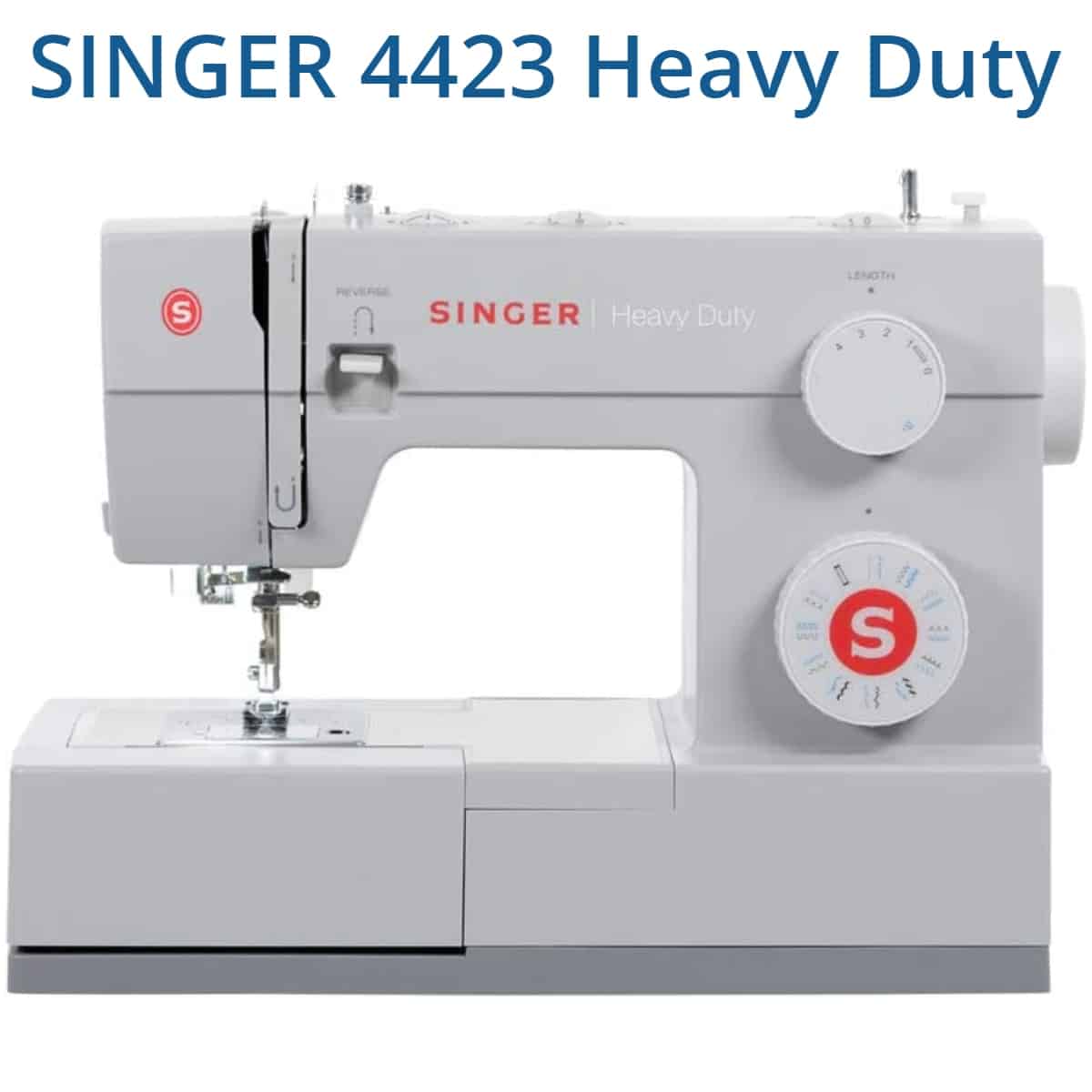
Singer 4423 vs Janome HD 3000
Singer 4423 is another of the machines that come to your mind whenever you think of a budget heavy-duty sewing machine. It's a solid heavy duty sewing machine that's also extremely popular on Amazon too. But it's a domestic heavy duty sewing machine with more plastic parts* then the Janome models. The frame is made of metal.
*plastic parts include: the handwheel drive, the dials have plastic wheels behind. The pressure regulator (on top of your machine) is made of plastic too (older Singers had a metal one). The tension system, the reverse lever, and the main gear on the gear drive is plastic too.
Again, I don't hold anything against a machine with plastic parts. In fact, there are plenty on my basic model, working just fine. But when choosing specifically a 'heavy-duty' one, one that has a stronger motor, I prefer as many internal bits as possible made from the good old metal. I'm from the ancient times I know 😀
Why I did not choose the Singer heavy duty sewing machine
I went forward and asked (a lot of questions) my local sewing machine dealer who sells various brands, and a lot of models. The service person said there was a whole different level of quality between the two - singer HD and Janome HD lines. I would get a way better deal with a Janome HD than with the Singer HD.
Then I asked (a lot of questions) someone who's well-versed in servicing both machines. That professional repairman would choose Janome HD over Singer HD, since the Singer model on average needs more parts replacements in that repair shop, and more servicing too. That was what made me decide to go with the Janome model.
Is Singer Heavy Duty Machine really heavy duty?
It is a popular, sturdy, quality domestic heavy-duty sewing machine that will work well for your regular sewing projects but not too heavy materials like leather, or, say, 5 layers of denim. It is serviceable, but you should not think of it as a machine parallel to industrial sewing machines. Yes it is stronger and heavier than the regular budget sewing machines, it has more metal and it will bring you through more sewing hours and through thicker materials than usual, regular, domestic machines. So it's a yes, it is a domestic HD machine.
Elna 3210 Easy Jeans (Also called Elna Easy Jeans)
Technical features:
- Stitch selection display
- reverse lever
- Built-in needle threader
- Strong needle penetration on all fabrics
- Rotary horizontal hook with transparent bobbin cover
- Automatic declutch bobbin winder
- Built-in thread cutter
- Drop feed dog
- Adjustable foot pressure
- Extra presser foot lift
- Clip-on presser feet
- Metric / inch measurements on needle plate and bobbin cover plate
- Free arm
- Carrying handle
- jeans bag / dust cover
Sewing features
- Number of stitches: 19 including 1 buttonhole
- Maximum stitch width 6.5 mm (same as the Janome!)
- Maximum stitch length 4 mm
- Needle positions variable
Sewing machine feet included: standard metal foot A, blind hem guide G, hemmer foot D, overlock foot C, satin stitch foot F, automatic buttonhole foot R, zipper foot E, buttonhole foot B.
Accessories: these are pretty much the same as with all the other models I mentioned before:
- 2 accessory storage areas
- bobbins
- needles
- quilting guide,
- an additional spool pin plus spool pin felt,
- large and small spool holders,
- a lint brush
- a screwdriver
- a seam ripper.
Both the Elna and the Janome models are equally easy to use for me, basic and simple, no computerized parts, and a major portion of these parts are metal parts, not plastic.
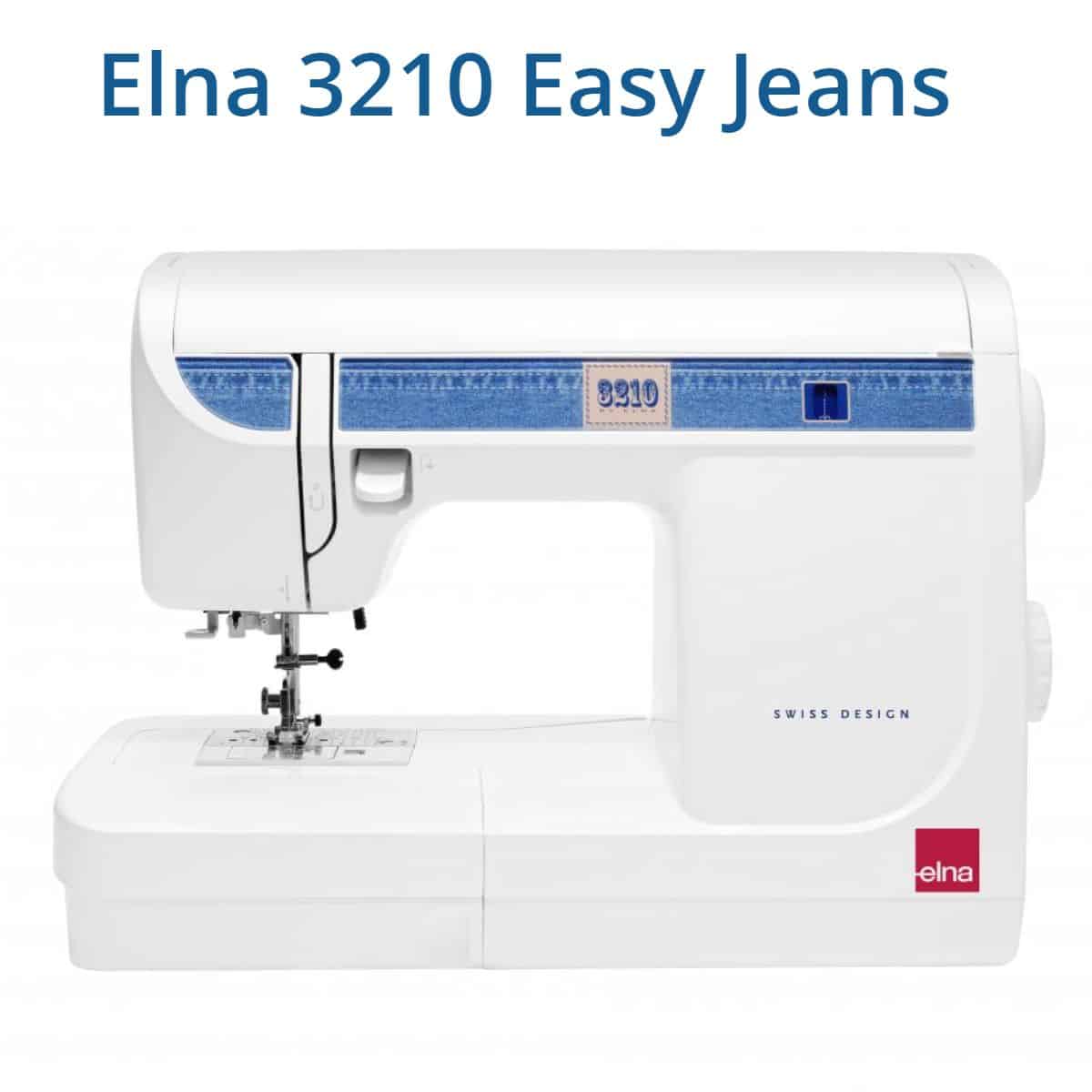
Elna 3210 Easy Jeans vs Janome HD1800
Elna 3210 Easy Jeans comes with practically the same features as the Janome HD 1800 and Janome HD 3000, including the top organizer box, top bobbin, needle threader, 0.7 amp motor, it is popular more in Europe than in the US. Of all the Elna models, this one was my top Elna heavy-duty sewing machine pick.
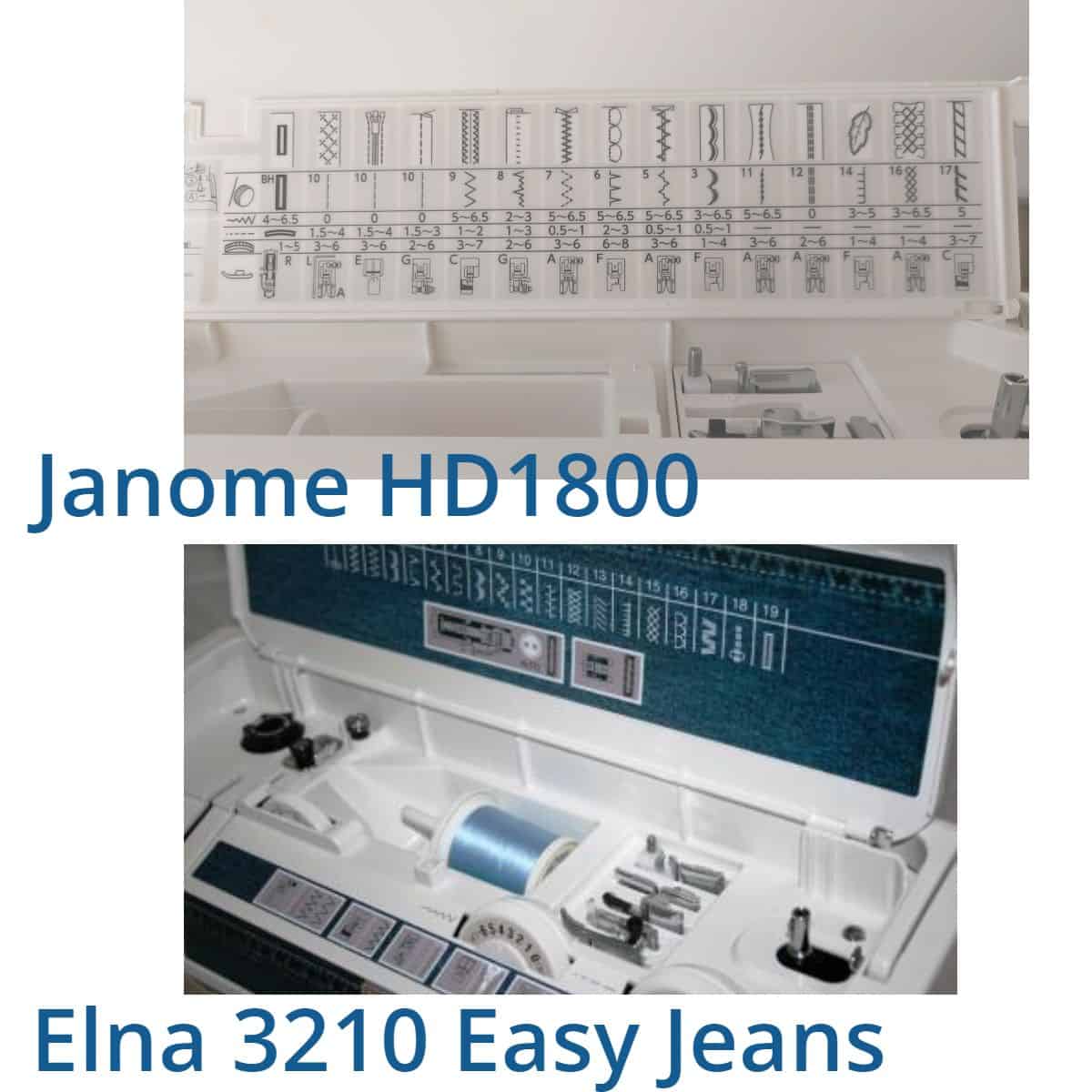
As already mentioned here and there on Applegreen Cottage, the Janome and Elna machines are both manufactured by the same company and have the same parts. This was very convenient for me when I transitioned from my basic Elna to a less basic Janome. No adjustment is needed, no learning curve. I did not need to search for buttons or dials (though I need to confess I am being spoiled by all the extra goodies on the new HD model, haha!)
Note on Professional-Grade, Industrial HD sewing machines
And, just a note on Janome HD9, a professional heavy-duty sewing machine with terrific features. It is designed for advanced users and is known for its speed and precision. As such, it is typically priced at a higher range. If you can spend several thousand USD on your machine, HD 9 is a great way to go.
Conclusion
I hope this post and review of the best heavy-duty sewing machines has helped you decide on your own perfect heavy-duty home sewing machine. Happy sewing!
WANT MORE FREE TUTORIALS AND GOODIES?
Get email updates and never miss out on new patterns, printables, and tutorials:
Or check out this pretty ALLina project bag pattern in our shop - for all your storage needs:
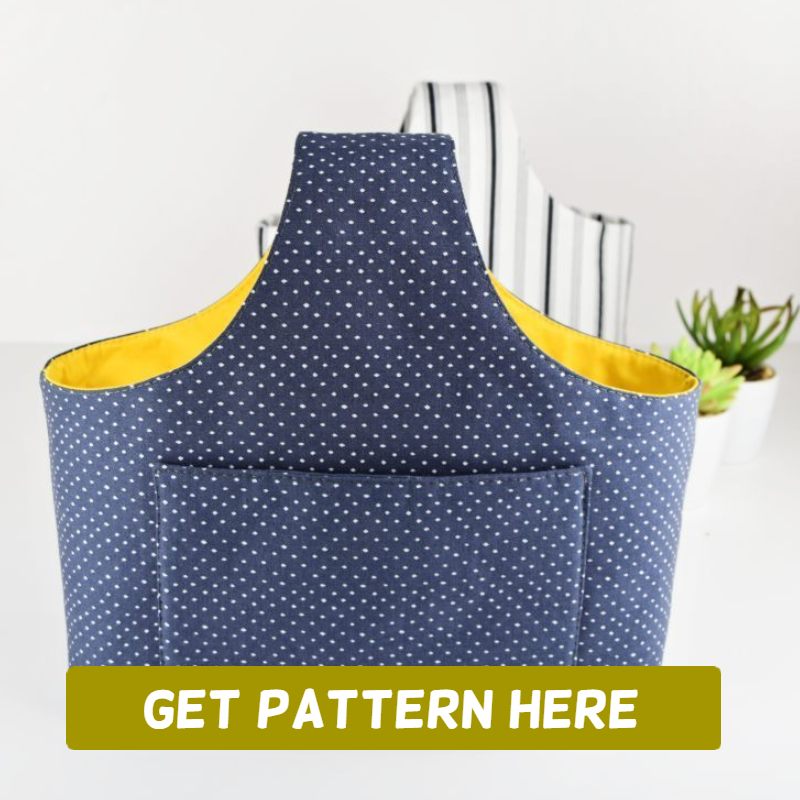

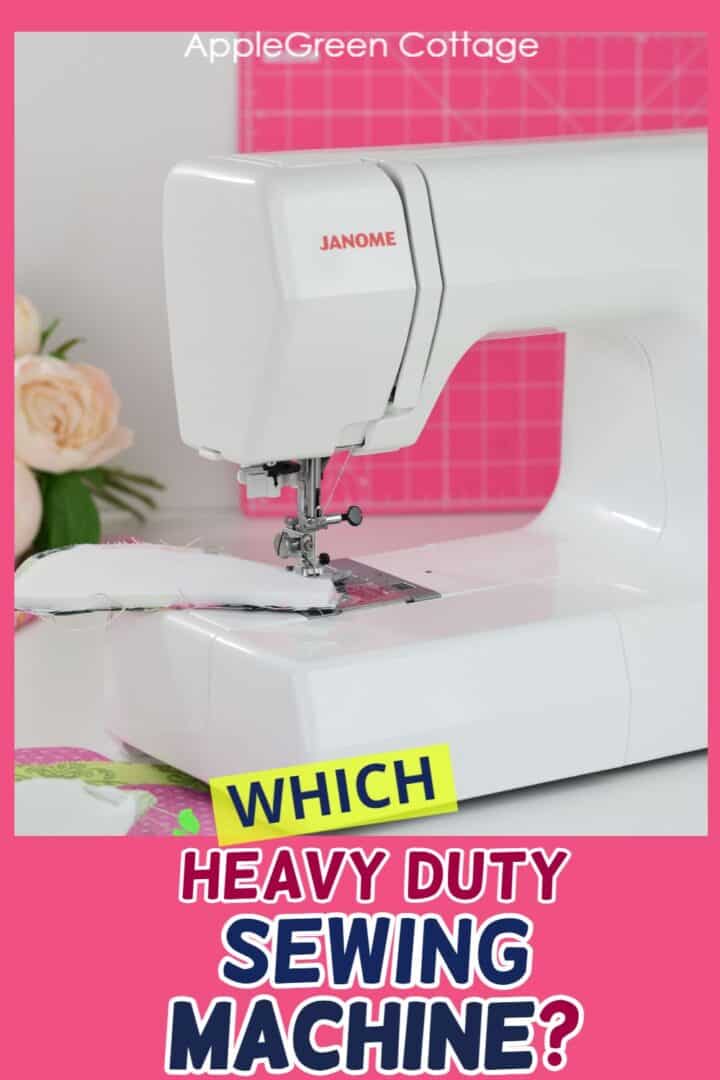
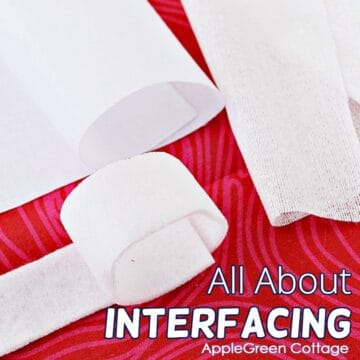
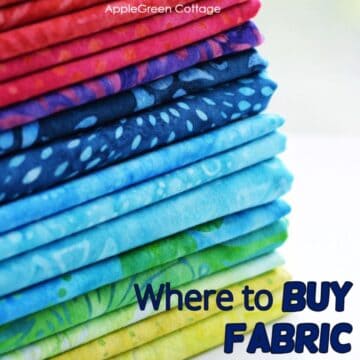
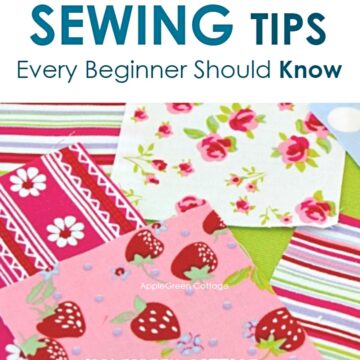
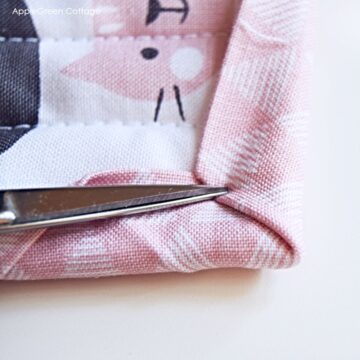
Alexis
Wonderful review. So much attention to detail. I want a machine and was dreading the mental load of choosing. I haven't been well. Thank you so much!